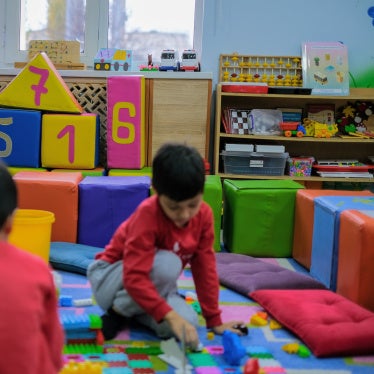The absence of color angered me. On the plastic desk, my book selfishly claimed all the space, stretching out with graceless inefficiency to lop off the edge and hang in the two-foot abyss above my lap. The immense white page depicted a fruit bowl of muted greys and indistinguishable blacks, an artificial creation of ink upon paper.
Next to me, Sam’s book covered only half the desk. His pencils, an eraser, and a juice box—Welch’s grape, never fruit punch—stood in neat array. His fruit bowl burst with the vibrancy nature intended. The apple was so red you could pluck it from the page and feel juice dribble down your chin, the sweetness lingering.
My enlarged books, devoid of color, and nearly double the size of a standard textbook, were among the accommodations I received as a legally blind child in a public school in Waltham, Mass. The books were cumbersome and I hated them. Although larger text helped me to read and keep up with the subject matter, I saw only the difference between myself and my classmates. Face an inch away from the page, I wanted to read just like everyone else. To learn as they did, to see as they did.
Yet as a legally blind third grader, I was fortunate to learn in a standard classroom, through my teachers had to adjust some of their lesson plans and practices. Drawing a “b” on the chalkboard came with oral instructions: “straight line down, pencil halfway back up, and loop to the right.” My classmates held my hand and traced along the paper, eager to help. They read problems off the board and told me when to kick the ball at recess. We all faced challenges: some dealt with fighting parents or arrived early for reduced-fee breakfast, others had trouble with math or reading. Yet we bonded, as kids do, over the school year. We ate and played together. We celebrated triumphs and commiserated over setbacks. We learned about and appreciated our differences.
For me, having a disability and learning in an integrated classroom among my peers was essential. It allowed me to make friends and resolve arguments. I felt liberated and empowered—sentiments that continued to develop and carried me to a double major with honors from U.C. Berkeley, and on to law school at U.C. Irvine this fall. The adjustments made for me also benefited those around me. Children who preferred verbal stimulation heard how to draw the letter b while they simultaneously saw it written. The girl playing goalkeeper and not paying attention appreciated a heads up that the soccer ball was headed her way as much as I did.
I was lucky to grow up in the United States and attend schools with teachers, administrators, and parents who believed in me. Regretfully, this is not the case for many of the estimated 93 million children with disabilities around the world. The real figure is most likely higher.
As Human Rights Watch has documented, students with disabilities often attend segregated schools, isolated from their peers and the community. Many students with disabilities do not attend school at all. In South Africa, this number reaches nearly half a million as children with disabilities face discriminatory physical barriers and attitudes, often beginning early in their lives when government officials classify them on the basis of their disabilities.
In Russia, Human Rights Watch research has found that some school administrators refuse to admit children with disabilities because they believe these children are unable to learn, are unsafe around other children, or engage in disruptive behavior. Upon reaching adulthood, people with disabilities frequently struggle to enroll in universities or gain the meaningful professional skills necessary to secure employment.
International treaties such as the Convention on the Rights of the Child and the Convention on the Rights of Persons with Disabilities, both ratified by more than 150 nations, require all children to receive an education.
Every child, regardless of disability, has the right to attend a quality, inclusive school on an equal basis with others. Until that right is realized, we continue to fail inside and outside the classroom. The opportunity to learn in my neighborhood school, to be exposed to viewpoints, and circumstances, and abilities that differed from my own made me a more tolerant and compassionate person. It challenged me to stretch my notion of what I could achieve, and it provided me the support system and confidence to make those ambitions reality.
Yes, I hated those enlarged books. But the important fact was that I read them next to Sam, in front of Mark, and behind Joanne. For me, that made all the difference as I sipped from my juice box and went outside to play another round of soccer.
|
Commentary
Inclusive Classrooms Benefit All Children
Published in:
Huffington Post
Your tax deductible gift can help stop human rights violations and save lives around the world.
Most Viewed
-
November 25, 2019
A Dirty Investment

-
March 29, 2021
“Everything I Have to Do is Tied to a Man”

-
January 24, 2005
The New Iraq?

-
December 7, 2011
"How Come You Allow Little Girls to Get Married?"

-
June 3, 2025
“They’re Ruining People’s Lives”





